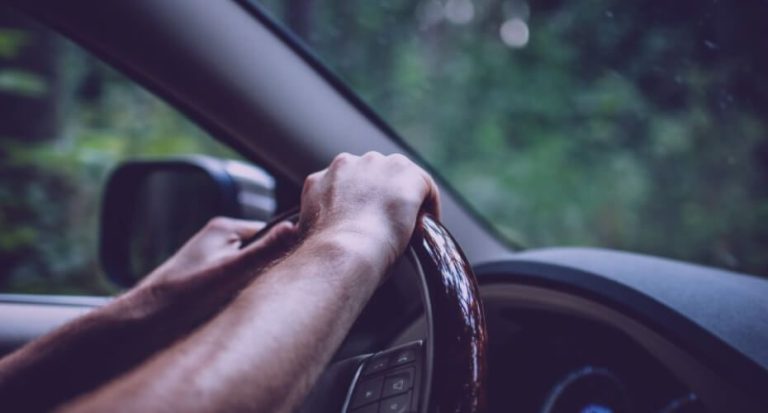Compare GAP Insurance
Mind the Gap: Compare Insurance and Protect Your Investment.

What is GAP Insurance?
GAP insurance is not a replacement for any other form of financial protection and usually needs another insurance policy alongside it to be valid.
GAP insurance works by making up the difference in pay-out between what your insurance company will pay and the value of your vehicle should an accident occur.Over time vehicles depreciate, meaning that if your vehicle is stolen or written off it can be rather hard to purchase a vehicle with similar specifications from the insurance company’s total pay-out.
What Vehicles Can You Get GAP Insurance For?
Our comparison service offers GAP insurance on cars, motorbikes, motorhomes, and vans. GAP insurance allows you to find multiple quotes from a range of insurers, meaning that you’ll get the ability to compare a range of different policies at varying prices to find the correct one for you.

Is GAP Insurance Only For New Vehicles?
You’ve Bought a Brand New Vehicle
When you buy a brand new vehicle, having it written off or stolen can leave you with a loss of money. This is where GAP insurance can come into play; let’s say you’ve bought a new vehicle for £35,000 and it’s stolen a year later. Your insurer won’t pay out the full £35,000 but will only give a percentage back.
GAP insurance covers this difference, meaning you can afford to replace the vehicle should you want to.
You’ve Bought Your Vehicle on Finance
A common occurrence when buying a vehicle is taking out a personal loan so you can afford it. This can however become a problem should the vehicle become stolen or written off because that even though you no longer have the asset you’ll still be expected to pay off the loan.
GAP insurance provides financial protection which will allow you to pay off the remainder of the loan.
Do You Need GAP Insurance?
GAP insurance is not a legal requirement in the UK; therefore you do not have to have it by law.
Nor is it essential to have GAP insurance if you own a vehicle, but it does aid you should something happen and you have to make a claim regarding your vehicle.
GAP insurance works alongside your vehicle’s normal insurance as mentioned earlier. If you’re within the first year or two of owning a brand-new vehicle with fully comprehensive insurance you may not need GAP insurance. It’s best to check your insurance policy wording and if you’re still unsure, ask your insurer directly.
What Are the Different Types of GAP Insurance?
Through our online GAP insurance comparison service you can receive quotes for four different vehicle types. These include cars, motorbikes, vans and motorhomes.
However, through our quote journey you may also see that there are four different types of GAP insurance to choose from, so here is a basic breakdown of each one:
Return to Invoice
Return to Invoice (RTI) is the most common form of GAP Insurance, and probably the easiest to understand. This type of policy will cover the difference between the amount your vehicle insurer pays and the invoice value of the vehicle when you bought it new.
Some RTI policies will also include cover to pay off any finance which is still owed to a finance provider at the time of loss. This is sometimes referred to as RTI Combined or RTI Plus Finance.
Recommended for: New or used vehicles, purchased from a dealership.
Not recommended for: Contract/Lease hire vehicles.
Vehicle Replacement Insurance
Some insurers offer Vehicle Replacement Insurance (VRI) as an upgrade to RTI. It covers the difference between the insurance settlement and the cost of a new vehicle of the same model, make and specifications. It’s great if you want a like-for-like replacement in the event of a loss.
Recommended for: New or used vehicles, purchased from a car dealership.
Not recommended for: Contract/Lease hire vehicles.
Return to Value
Return to Value (RTV) or “Agreed Value” is similar to RTI, but will usually only cover you up to the market value of the vehicle when you took out the GAP policy, not the invoice price you paid. Therefore the payout is likely to be less than it would be on an RTI policy. However, a Return to Value policy may come with a cheaper premium.
Recommended for: Used vehicles, purchased privately. Or purchased from a dealer some time ago.
Not Recommended for: New vehicles, contract/lease hire vehicles.
Contract/Lease Hire
Contract/Lease Hire GAP Insurance is specifically designed for private contract/lease hire vehicles. If your vehicle is on a lease then this policy will pay out the difference between the insurance settlement and the amount required from the lease company to settle the contract.
Recommended for: Contract/lease hire vehicles where there is no option to buy the vehicle at the end of the contract.
Not recommended for: Any vehicle on any other finance arrangement.
What Does GAP Insurance NOT Cover?
When Don’t You Need GAP Insurance?
As with everything, you might not need GAP insurance depending on your circumstances.
Here are some common reasons to consider as to why you may not want to get GAP insurance:
- You don’t need a replacement vehicle of equal value. If you aren’t worried about the depreciation that your vehicle will inevitably accumulate, then there is no need to worry about GAP insurance. Should your vehicle become stolen or you have an accident at it is written off your insurance may pay out enough for you to get an equal vehicle of similar value and age depending on the circumstances.
- Your vehicle is second-hand. Whilst you can still get GAP insurance for second-hand vehicles, especially if you’ve taken out a loan to acquire it, you might not want GAP insurance.
- You have fully comprehensive insurance, and your vehicle is less than one year old. Usually, if an incident where your insurance company has to pay out occurs you will find that newer vehicles less than a year old will be fully covered. This is because most of the fully comprehensive vehicle insurances offer a new vehicle replacement within the first one-to-two years of a vehicle’s life. You must read your vehicle insurance documents carefully and ask your insurer should you have any questions regarding your cover.
Articles and Guides
What Is GAP Insurance and Do You Need It?
Our Partners




Frequently Asked Questions
Do GAP insurance policies only cover new cars?
No, GAP insurance policies are available for both new and used cars. However, GAP coverage is more commonly sought by those who have purchased or leased a new car. This is because the risk of owing more than the car is worth (due to depreciation) is much higher with a brand-new vehicle.
Does GAP insurance need a car insurance policy to be valid?
Yes, GAP insurance typically needs to be used in conjunction with a traditional comprehensive car insurance policy. Without an underlying car insurance policy, your GAP coverage will not provide any protection if you experience a covered loss. Be sure to check with your insurer for the specific requirements of their GAP policies.
What is the maximum amount GAP insurance will pay out?
The maximum amount that GAP insurance will pay out is typically the difference between what you owe on your car loan and the actual cash value of your vehicle. In most cases, this will be enough to cover the balance of your loan, but it is important to check with your insurer for any specific coverage limitations.
When can you claim on GAP insurance?
You can usually claim on GAP insurance if your vehicle is stolen, declared a total loss due to an accident, or experiences damage that exceeds the amount covered by your traditional car insurance policy. Before making a claim, however, you should speak with your insurer and make sure that you understand any specific requirements or limitations associated with their GAP policies.
How long do your quotes remain valid for?
Your quotes from insurers typically remain valid for up to 30 days, depending on the insurer. After this period, you will need to re-submit your request and obtain new quotes. You should also keep in mind that insurance policies may change over time so be sure to check with the insurer prior to purchasing a policy.

